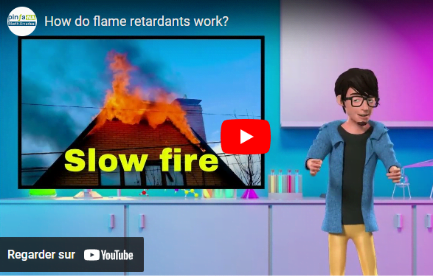
pinfa-NA launches series of short (2-3 minute) educational videos on the use of flame retardants for fire protection. The short learning videos aim to inform the public on public fire safety, flame retardant technology and human & environmental health topics. A dozen further videos are planned by pinfa-NA.
Timothy Reilly, Vice-Chairman of pinfa-NA: “flame retardant-containing materials play an important behind-the-scenes role in protecting human life and property. While society routinely learns from the media about the destructive fire that did happen, we rarely hear about the fire that did not happen thanks to specially designed materials which properly performed. pinfa-NA’s planned multi-part video series will demonstrate the important role these materials play in public fire safety.”
The first video explains how flame retardant materials prevent fires and save lives. Zoé and Ethan, using animated infographics, start by showing that fire needs fuel, heat and air, and explain that flame retardants can prevent the fire starting (ignition), slow its development and reduce heat release, so increasing time for building occupants to escape safely. The video ends with the message that “Flame retardant materials play an important part in protecting life and property”. A dozen further explainer videos are now planned by pinfa-NA
The second video shows how flame retardants contribute to passive fire safety, keeping us safe the whole time. With a building fire every minute every day in the USA (NFPA data), both active and passive fire safety are needed. Applications of flame retardant materials in passive fire safety are summarised: buildings, furnishings, transport, electrical installations, electronics. A comparative burn test of flame retardant and non-flame retardant material is shown.
The third video discusses fire regulations, codes & standards, and how these correspond to real fire risk scenarios, from technical specifications through to legal requirements. The example of mattress flammability standards is given, where NIST estimates that these requirements save 65 lives per year in the USA. The need for differing standards for the same type of product, depending on fire risk and escape possibilities are explained: a fire in seating on a ship or airplane is likely to have worse consequences than in a building.